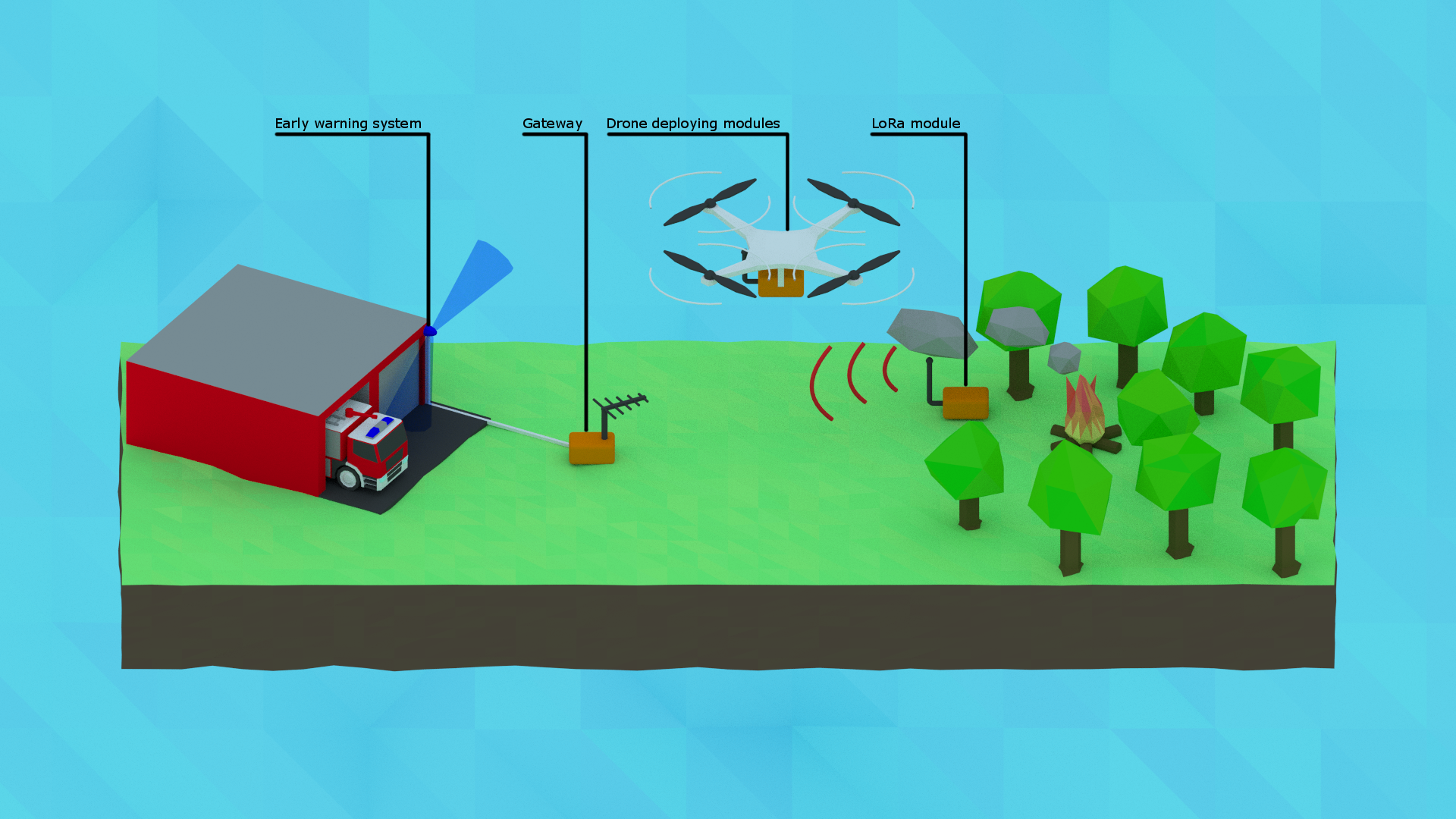Idea
In the last month the main topic of any news site, in my country, are forest fires and how they are destroying everything in their path. They are causing major issues burning down houses and large fields and owners are getting very little back or nothing at all. Everyones excuse was that they didn't have time to prepare and that when they got the call it was already too late. We had to change that so we tryed to find a way to help but that it doesn't cost so that there aren't any excuses why it shouldn't be implemented.
We had a weather station design that sends temperature, humidity and pressure data to our server using ESP devices and our existing mesh network, it was inexpensive and low-maintenance so we used it as a base for our fire detection device. To detect fires we added an air quality sensor that could detect smoke but also combined with other sensors like the temperature one it is possible to detect if that is just smoke or if it was already a large fire because of the temperature difference.
The next step was figuring out how to set up these devices over a large area and also how would they send their data without an internet connection. We needed to find a way to transfer data over distances greater than 2 kilometers and it needed to run on batteryes for a long time, the solution was the use of LoRa.

Simple schematic of how the whole fire alert system would work
What is LoRa?
LoRa Technology is a wireless modulation for long-range, low-power, low-data-rate applications. By achieving a range of more than 15 kilometers in a suburban environment and more than 2 kilometers in a dense urban environment, LoRa technology solutions target multiple application domains, such as Internet-of-Things (IoT), metering, security, and machine-to-machine (M2M).
This basically means that we can make devices that could run on batteries for weeks and also be able to send us data over 10 or more kilometers because it would be used outdoors and that is enough to cover a large area.

Dragino shield for Arduino Uno to use as a LoRa node
Testing
To test our devices we needed to test how far we could go and still be able to send data to our gateway using LoRa and how long can it run on a battery pack. For measuring the distance we activated our gateway and sat in a car with the LoRa node that sent data every 2 minutes to our server. We recorded our route and marked whenever we received the signal. The test was done in a city and the furthest we got was 2 kilometers and that was pretty amazing for sending data in a crowded city with many obstacles. For the battery test we plugged in a battery pack and the device was set to send data every 1 minute and when it got depleted we measured the time and then we set it to 2 minutes and then to 3 so we could predict how much it would last with other options and to find the best one.
Delivery
The delivery of our nodes and how the system works is explained in another log: (link) For delivering nodes we are using drones with release systems attached to them that drop the nodes when they fly over a set place. This makes it easier to place a lot of nodes quickly but all from a single location.
What is next?
We still need to make an enclosure for the LoRa node that is resilient to outside effects and different impacts. After that we can test the delivery system and also how far can we place the LoRa nodes and how long can they last on batteries outside.
Discussions
Become a Hackaday.io Member
Create an account to leave a comment. Already have an account? Log In.